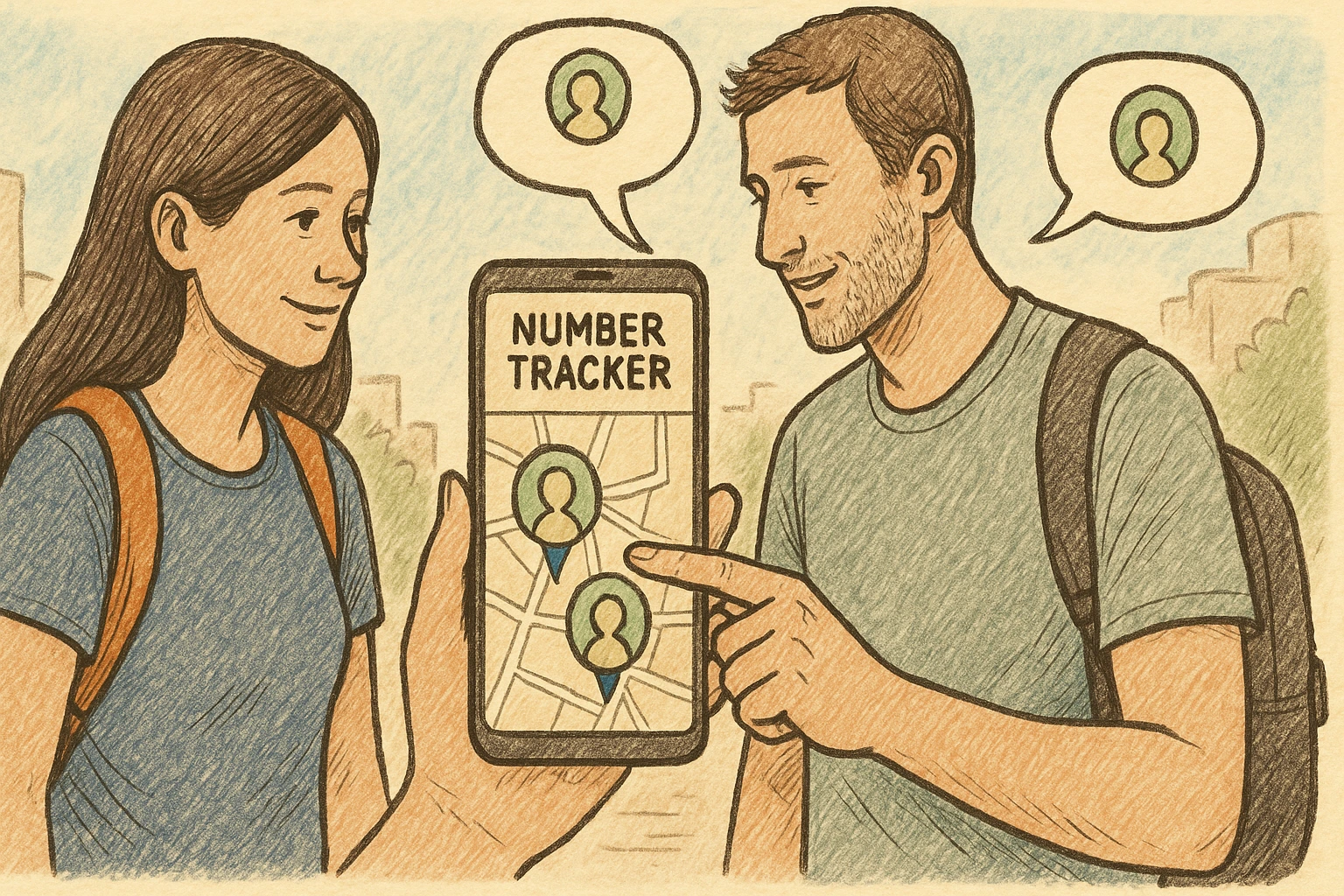In the digital age, travel isn’t just about passports and packing cubes — it’s about protecting your digital footprint as much as your physical one. With mobile banking, travel documents stored in the cloud, and constant social connectivity, one security slip-up can have a domino effect. So before you even set foot on that plane, train, or ferry, let’s get your devices (and your data) travel-ready. There are many must-use digital protectors: reliable connection worldwide, a phone tracker, specific apps for emergency situations. Let’s quickly review them!

📱 Physical Protection: First Line of Defense
Your gadgets endure more than you think during trips — sudden drops, unexpected weather, cramped luggage spaces. The simplest and most effective solution? Arm them with the right gear.
- Use high-quality protective cases: Go beyond aesthetics. Opt for hardshell cases for laptops and shock-absorbent or edge-raised cases for smartphones. This small investment can prevent hundreds of dollars in damage.
- Screen protectors matter: A cracked screen abroad can leave you struggling to access vital information. Tempered glass protectors absorb impacts that might otherwise shatter your display.
- Cable organizers and waterproof pouches: Keep your chargers, adapters, and tech essentials safe from spills, sand, and chaotic airport bags.
🔎 Number Tracker: Your Silent Safety Companion
While standard tools handle devices and data, Number Tracker provides a unique layer of personal and situational safety. It’s main function is location sharing for two or more people and a bunch of related features for coordination and safety insurance. Here are they:
- Reliable Location Sharing: Even if the signal is poor, you can always see your dear ones’ locations or share yours. An essential feature for remote areas.
- Safety Alerts: If your device moves out of the safe circle or enters an unsafe area that you have chosen, your loved ones will get a notification.
- Peace of Mind for Group Travel: Whether you’re coordinating airport pickups or checking in on separated friends, Number Tracker keeps you in control of communication.
🔐 Digital Safety: Secure Every Tap and Click
Physical protection is only half the story. Without strong digital hygiene, your devices are like unlocked doors in an unfamiliar city.
- Passwords + Biometric Locks: Always use strong, unique passwords. Wherever possible, enable fingerprint scanning or facial recognition to prevent unauthorized access, especially if your phone is lost or stolen.
- Enable Two-Factor Authentication (2FA): Before your trip, activate 2FA on accounts like Gmail, Dropbox, and banking apps. Even if your login credentials are compromised, this adds a critical second layer of protection.
- Regular Software Updates: Don’t delay those updates. Developers constantly patch vulnerabilities that hackers exploit, especially in public Wi-Fi environments like airports or cafés.
💡 Pro Tip: Store copies of your travel documents (passport, visa, insurance) in an encrypted folder or secured cloud service. Apps like 1Password or LastPass can store digital copies safely with access control.
🌡️ Environmental Considerations: Tech + Climate
Don’t underestimate Mother Nature’s impact on your devices. From beach holidays to alpine treks, tech and extreme conditions don’t always mix.
| Condition | Risk | Prevention Tip |
| Humidity | Moisture seepage, short circuits | Use silica gel packets in your tech bag |
| Heat | Battery damage, screen warping | Avoid leaving devices in direct sunlight |
| Cold | Screen freezing, battery drain | Keep devices close to your body for warmth |
Taking five extra minutes to pack your devices carefully can mean the difference between a smooth trip and a frustrating tech emergency.
🌍 Reliable Connectivity Wherever You Are
A dependable internet connection isn’t just about uploading selfies or booking accommodations — it’s your gateway to real-time navigation, translation, weather updates, and urgent communications.
- Travel SIM Cards: Local SIMs are usually more affordable than roaming and offer generous data plans. Apps like Airalo and Holafly even offer eSIMs for compatible phones, eliminating the need to switch physical cards.
- Pocket Wi-Fi Devices: Portable Wi-Fi routers are ideal for group travelers. These gadgets allow multiple devices to stay online using a single data plan — perfect for families or digital nomads.
- Offline Maps Are Essential: Apps like Google Maps and Maps.me allow you to download entire city maps before you go. No signal? No problem. You’ll still get directions, search landmarks, and see your location via GPS.
🧠 Smart Tip: Save your accommodation address and local transit routes in offline notes or map bookmarks before heading out for the day.
🚨 Emergency Ready: Prepare Before You Need It
Unexpected situations happen. A pickpocket, a missed train, a sudden illness — preparation minimizes panic. Here’s how to turn your phone into a personal travel safety hub:
- Save Local Emergency Numbers: Don’t wait until you need help. Save numbers for police, ambulance, and fire services, as well as the nearest embassy or consulate, in your contacts.
- Enable Emergency Info on Lock Screen: Most smartphones allow you to display emergency contacts and health details without unlocking the phone — invaluable for responders in case of accidents.
- Language Barriers? Use Translation Apps: Google Translate offers an offline mode and camera translation. You can photograph foreign-language signs, menus, or even medication labels and get instant translations.
📲 Safety Apps That Work When You Need Them Most
Not all travel apps are created equal. Focus on those that offer real-time assistance, device recovery features, and trustworthy alerts.
- Find My (Apple) / Find My Device (Android): These built-in tools allow you to locate lost devices, lock them remotely, or erase sensitive data. Make sure they’re active before you travel.
- Travel Smart by the U.S. State Department: Offers country-specific safety alerts, travel advisories, embassy contacts, and geo-targeted notifications. It’s free and highly rated for global use.
- GeoSure: This app provides crowd-sourced safety scores for neighborhoods around the world, covering issues from political unrest to women’s safety.

☁️ Back Up and Safeguard Your Data
Imagine losing your phone mid-trip and with it, hundreds of travel photos, boarding passes, and important documents. That kind of loss can ruin more than just your vacation. Here’s how to ensure your data stays intact — no matter what happens.
- Cloud Backup Is a Must
Use services like Google Drive, iCloud, or Dropbox to automatically back up your files, photos, and even notes. Enable automatic sync before your trip and check that your storage has enough space. - Encrypt Sensitive Files
If you’re traveling with documents like passports, insurance policies, or work materials, use apps like NordLockeror VeraCrypt to encrypt files and prevent unauthorized access. - Consider Device Protection Plans
Carriers and companies like AppleCare or Asurion offer travel-friendly plans that cover theft, accidental damage, and even overseas repairs. It’s a smart investment for longer journeys.
🔒 Pro Traveler Tip: Take a quick backup of your phone just before departure and again before your return — you’ll have two secure snapshots in case anything goes wrong.
✈️ Upgrade Your Trip with Smart Travel Apps
Technology isn’t just about safety — it can also enrich your travel experience, from smarter planning to more immersive exploration. Here are a few apps that savvy travelers swear by:
| App | Purpose | Why It Matters |
| TripIt | Itinerary management | Automatically pulls bookings from email |
| Google Translate | Real-time translation + offline | Talk, scan, or type in multiple languages |
| AR City | Augmented reality navigation | View landmarks in real time with overlays |
| XE Currency | Currency conversion | Up-to-date rates and offline mode |
Don’t forget local-specific apps. For example, in Japan, HyperDia is excellent for train travel; in Korea, Naver Mapoutperforms Google Maps. A little research into region-specific tools can dramatically improve your experience.
📚 Keep Learning: Trusted Travel Tech Resources
Technology is evolving fast, and staying informed helps you remain a step ahead. Here are some well-respected blogs and resources to help you dig deeper into the world of travel and tech:
- PhocusWire
Covers cutting-edge travel tech news, from AI-powered booking tools to the future of biometric security in airports. - Too Many Adapters
A down-to-earth blog built for digital nomads, offering real-world reviews of tech gear, connectivity solutions, and app breakdowns. - Skift Travel Technology
Offers in-depth analysis of industry trends, including smart tourism, sustainability innovations, and digital travel tools.
These platforms not only help you choose the best gear and apps but also offer insight into how digital tools are transforming the travel landscape.
Traveling today offers more freedom than ever before — but with freedom comes responsibility. Protecting your devices, securing your data, staying informed, and using smart tools like Number Tracker doesn’t just keep you safe. It empowers you.
From the moment you book your flight to the day you return home, technology can be your greatest ally — if you use it wisely. So pack your bags, power up your devices, and travel with peace of mind.
Safe travels — powered by smart tech.